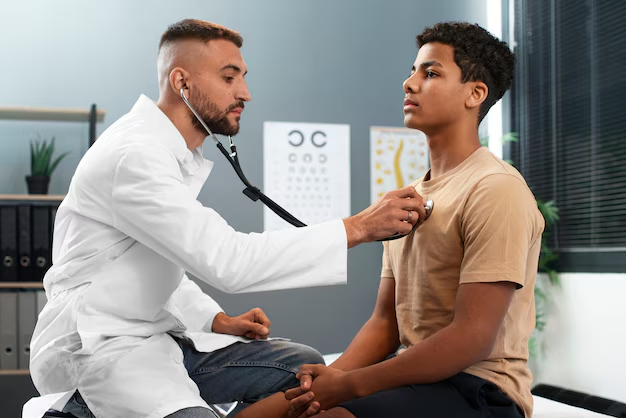Understanding the Path to a Parkinson’s Diagnosis: What You Should Know
When tremors start affecting your day-to-day activities and balance becomes elusive, you might ask yourself a daunting question: Do I have Parkinson’s Disease (PD)? Understanding how Parkinson’s Disease is diagnosed is essential in navigating the uncertainties and taking control of managing one’s health journey.
The Complexity of Diagnosing Parkinson’s Disease
Diagnosing Parkinson’s Disease is not as straightforward as a simple blood test or scan. The process can be intricate due to the complexity of the condition and its overlap with symptoms of other neurological disorders. The accurate diagnosis of PD lies in meticulous observation and a series of steps involving both clinical evaluation and diagnostic testing.
Clinical Diagnosis: The Foundation
1. Medical History and Symptom Review
The pathway to diagnosing Parkinson’s Disease often begins in the doctor’s office. An in-depth review of a patient’s medical history can provide vital clues. Physicians look for hallmark symptoms such as:
- Tremors — Typically starting in the hands or fingers.
- Bradykinesia — Slowness of movement, making simple tasks laborious.
- Muscle Rigidity — Stiffness and inflexibility in the limbs or trunk.
- Postural Instability — Problems with balance and coordination.
2. Physical and Neurological Examination
The next step is a detailed physical and neurological examination. Neurologists will assess motor skills, muscle strength, reflexes, and coordination. They may ask patients to perform specific tasks, such as walking or opening and closing their hands, to observe any unique movement difficulties.
The Role of Diagnostic Tests
While Parkinson’s Disease primarily relies on clinical diagnosis, various tests are employed to rule out other conditions with similar presentations.
Imaging Tests: Shedding Light on the Brain
1. MRI and CT Scans
These scans are not used to confirm Parkinson’s but to exclude other brain disorders that could mimic its symptoms, such as strokes or brain tumors.
2. DaTscan
The DaTscan is designed to visualize dopamine transporters in the brain. Since Parkinson’s Disease involves dopamine deficiency, this scan can support the diagnosis by showing reduced dopamine activity. However, it is not definitive and is often used in conjunction with other findings.
Laboratory Tests: Ruling Out Other Conditions
Blood tests may also be performed to eliminate the possibility of other diseases that could cause similar symptoms. Conditions such as thyroid disorders or liver problems might need to be ruled out.
Differential Diagnosis: Unraveling Complex Syndromes
1. Essential Tremor
A common condition often confused with Parkinson’s, essential tremor, can be distinguished by its tendency to worsen with movement rather than at rest.
2. Multiple System Atrophy (MSA) and Progressive Supranuclear Palsy (PSP)
These are neurodegenerative disorders that mimic Parkinson’s symptoms. Experienced neurologists evaluate subtle differences in symptom patterns to distinguish between these conditions.
The Importance of a Movement Disorder Specialist
Given the nuances in diagnosing Parkinson’s Disease, consulting a movement disorder specialist can be invaluable. These professionals have specialized training in evaluating Parkinsonian syndromes and can offer insights beyond general neurological examinations.
Living with the Diagnosis: Next Steps
Receiving a Parkinson’s diagnosis can be overwhelming, but understanding the avenues for management and support can empower patients.
Building a Comprehensive Care Team
1. Neurologist
Your central point of contact for managing Parkinson’s, devising treatment plans, and adjusting medications.
2. Physical Therapist
To maintain mobility and strength, physical therapists design exercise routines tailored to individuals’ abilities.
3. Occupational Therapist
They help adapt daily tasks and environments to make life more manageable and safer.
4. Speech Therapist
For those experiencing speech difficulties or swallowing issues, a speech therapist can provide strategies and exercises to help.
Lifestyle Modifications
Managing Parkinson's involves lifestyle adjustments that promote overall well-being. Here are some recommendations:
- Exercise Regularly: Engaging in activities like walking, yoga, or tai chi can improve mobility and reduce symptoms.
- Balanced Diet: Eating a nutritious diet rich in fruits, vegetables, and lean proteins supports brain and body health.
- Stress Management: Practicing stress reduction techniques such as meditation or deep-breathing exercises can alleviate symptoms.
Staying Informed and Connected
Education is empowering. Staying informed about Parkinson’s and connecting with community groups or online forums can provide support and reduce feelings of isolation.
Research and Trials
Participation in research and clinical trials can be an option for those interested in contributing to advancements in treatment and understanding of Parkinson’s Disease. Engaging in research provides access to cutting-edge therapies and insights into the disease progression.
Transforming Uncertainty Into Possibility
Navigating Parkinson’s Disease from diagnosis through to management requires resilience and adaptability. Understanding the diagnostic process can provide clarity and guide individuals in making informed decisions about their health.
While a diagnosis is a pivotal moment, it’s the beginning of a journey filled with possibilities for management and improved quality of life.
Key Takeaways on Parkinson’s Disease Diagnosis
- Symptom Recognition🔍: Key symptoms include tremors, bradykinesia, muscle rigidity, and postural instability.
- Clinical Examination🩺: A neurologist conducts physical and neurological exams to observe movement issues.
- Diagnostic Tests🧪: Imaging such as DaTscan, MRI, or CT to exclude other conditions.
- Specialist Consultation👨⚕️: Movement disorder specialists offer advanced assessment.
- Holistic Care Approach🌿: Build a team of neurologists, therapists, and nutritionists for comprehensive management.
- Lifestyle and Support🚶♀️: Regular physical activity, a balanced diet, and community support enhance well-being.
By focusing on knowledgeable and proactive approaches, individuals can manage Parkinson’s effectively and lead fulfilling lives.

Related Articles
- Are There Environmental Causes Of Parkinsons
- Can Alcohol Cause Parkinson's
- Can Concussions Cause Parkinson's
- Can Females Get Parkinson Disease
- Can Head Trauma Cause Parkinson's
- Can Parkinson Disease Cause Dizziness
- Can Parkinson's Affect Eyesight
- Can Parkinson's Affect Memory
- Can Parkinson's Affect Speech
- Can Parkinson's Affect Vision